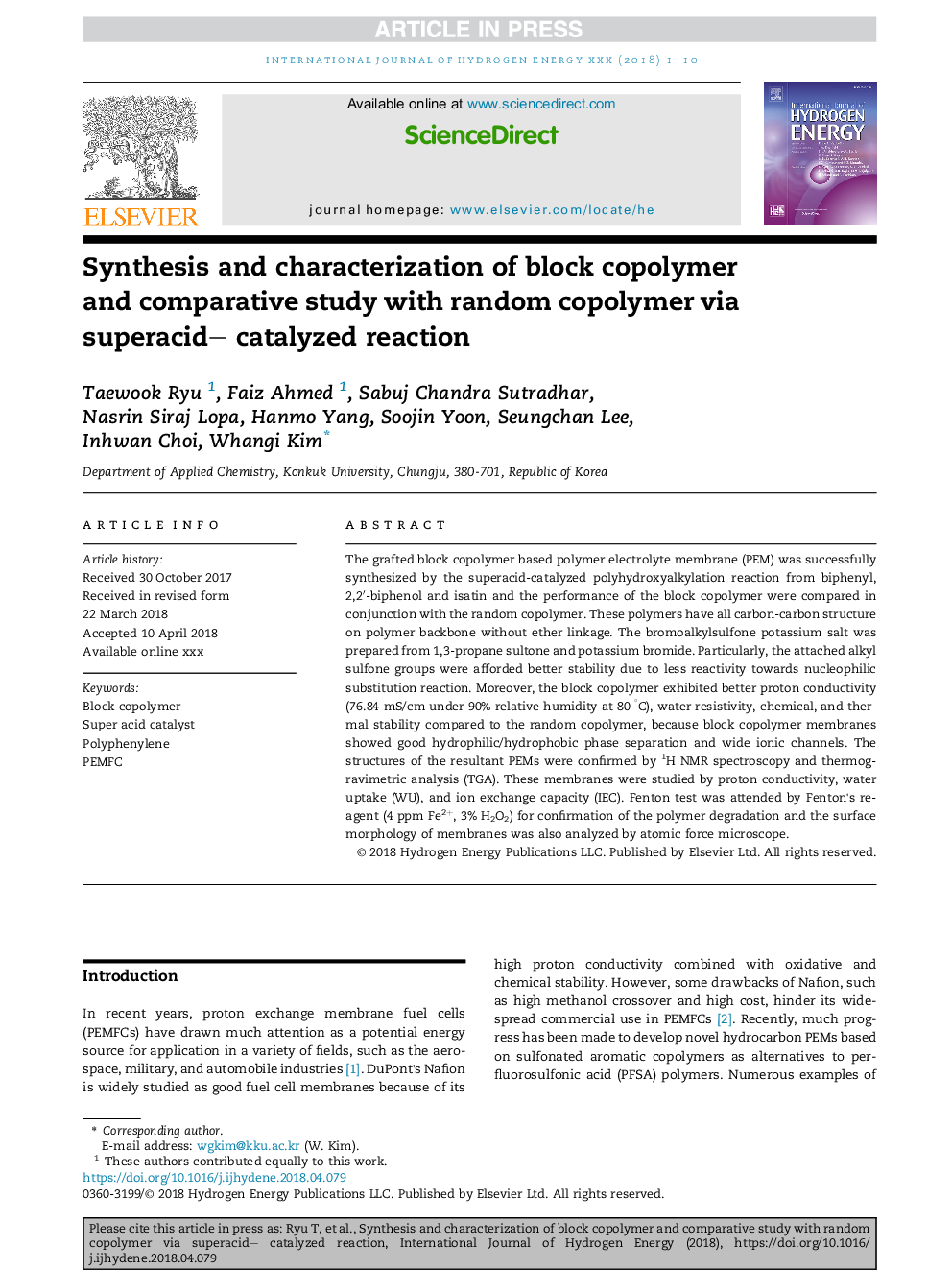| Article ID | Journal | Published Year | Pages | File Type |
|---|---|---|---|---|
| 7705622 | International Journal of Hydrogen Energy | 2018 | 10 Pages |
Abstract
The grafted block copolymer based polymer electrolyte membrane (PEM) was successfully synthesized by the superacid-catalyzed polyhydroxyalkylation reaction from biphenyl, 2,2â²-biphenol and isatin and the performance of the block copolymer were compared in conjunction with the random copolymer. These polymers have all carbon-carbon structure on polymer backbone without ether linkage. The bromoalkylsulfone potassium salt was prepared from 1,3-propane sultone and potassium bromide. Particularly, the attached alkyl sulfone groups were afforded better stability due to less reactivity towards nucleophilic substitution reaction. Moreover, the block copolymer exhibited better proton conductivity (76.84 mS/cm under 90% relative humidity at 80 °C), water resistivity, chemical, and thermal stability compared to the random copolymer, because block copolymer membranes showed good hydrophilic/hydrophobic phase separation and wide ionic channels. The structures of the resultant PEMs were confirmed by 1H NMR spectroscopy and thermogravimetric analysis (TGA). These membranes were studied by proton conductivity, water uptake (WU), and ion exchange capacity (IEC). Fenton test was attended by Fenton's reagent (4 ppm Fe2+, 3% H2O2) for confirmation of the polymer degradation and the surface morphology of membranes was also analyzed by atomic force microscope.
Keywords
Related Topics
Physical Sciences and Engineering
Chemistry
Electrochemistry
Authors
Taewook Ryu, Faiz Ahmed, Sabuj Chandra Sutradhar, Nasrin Siraj Lopa, Hanmo Yang, Soojin Yoon, Seungchan Lee, Inhwan Choi, Whangi Kim,
